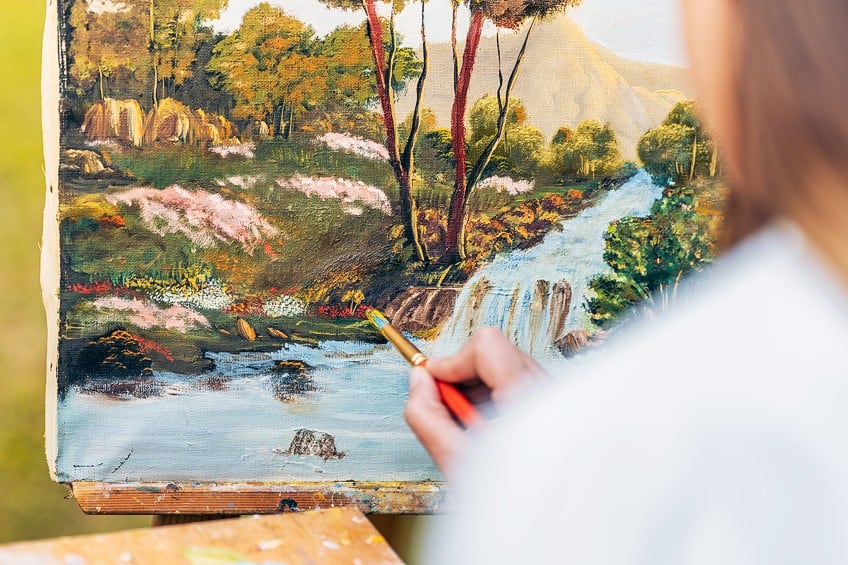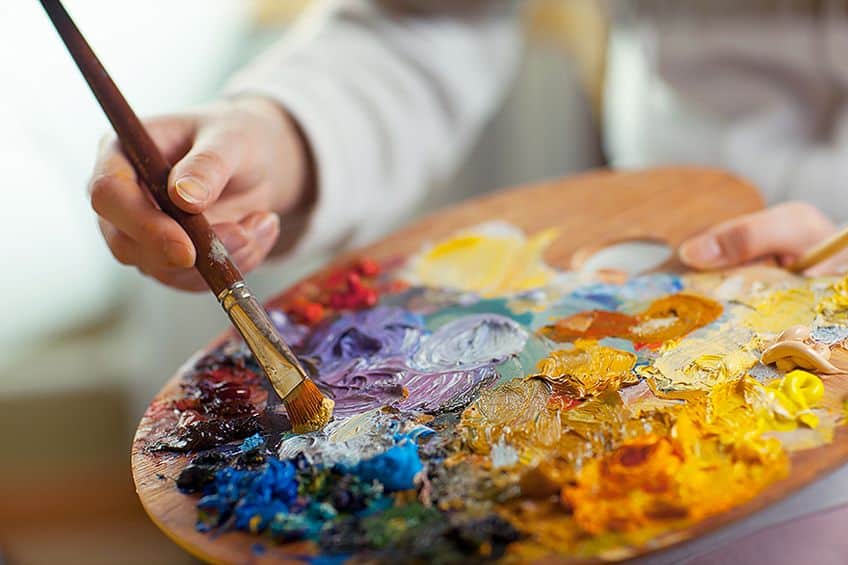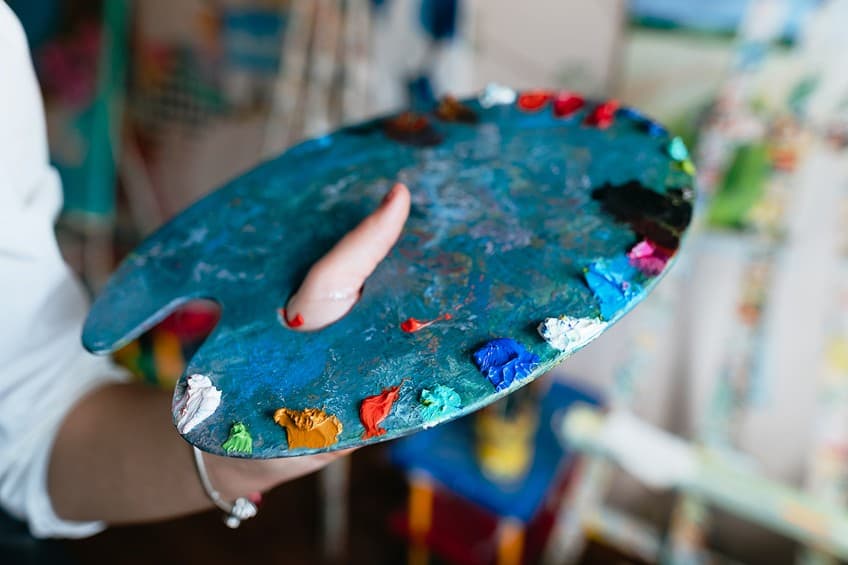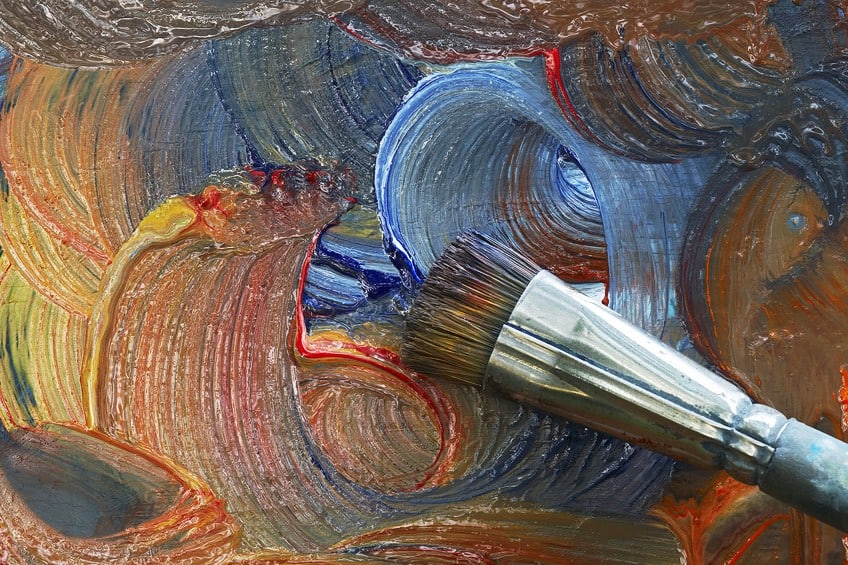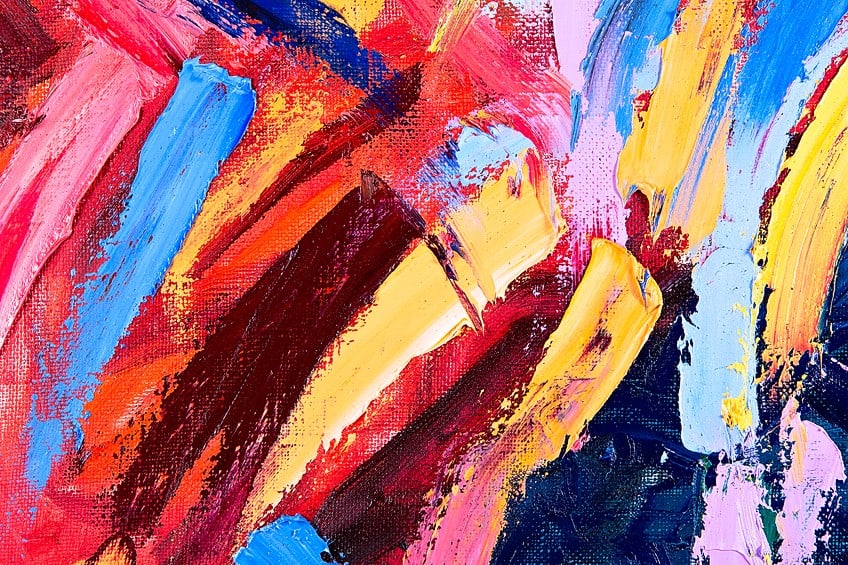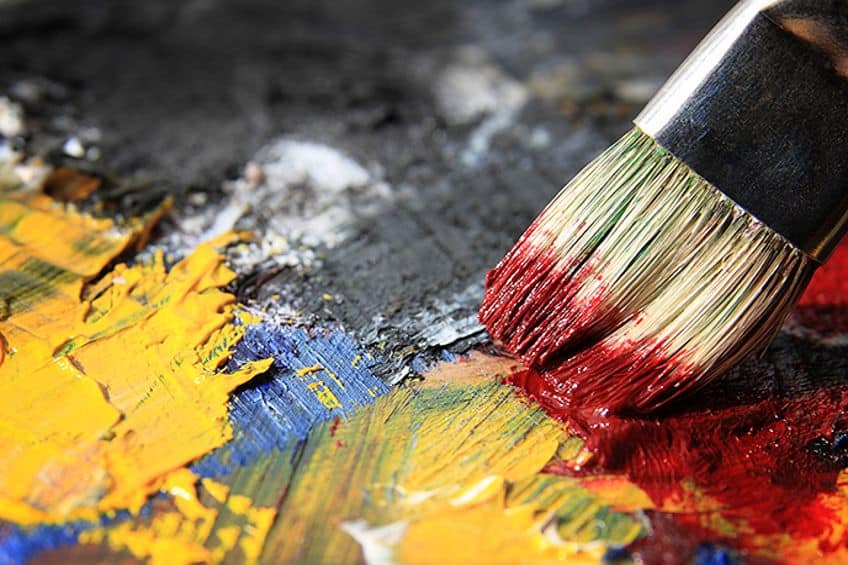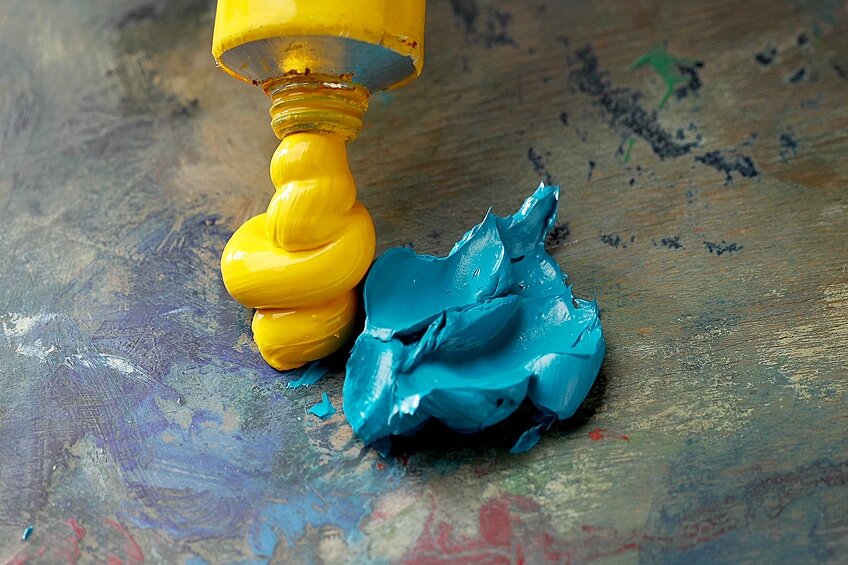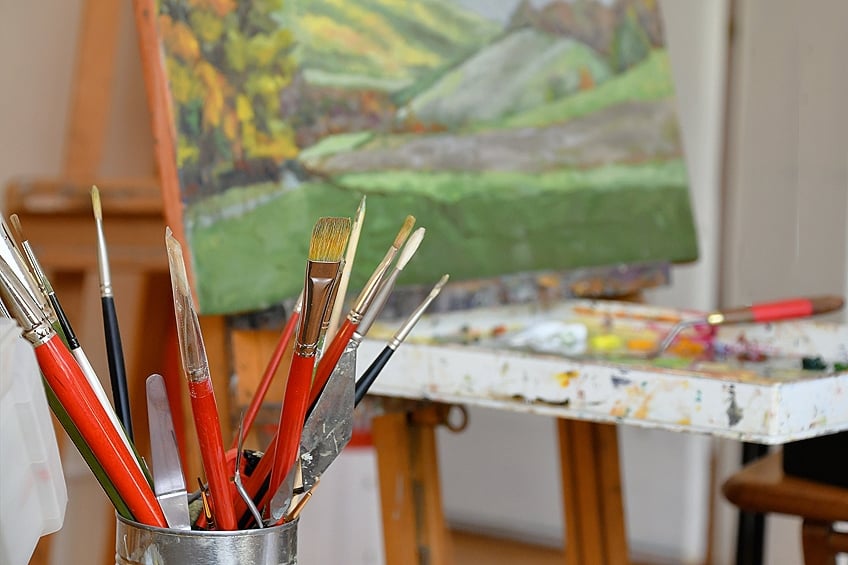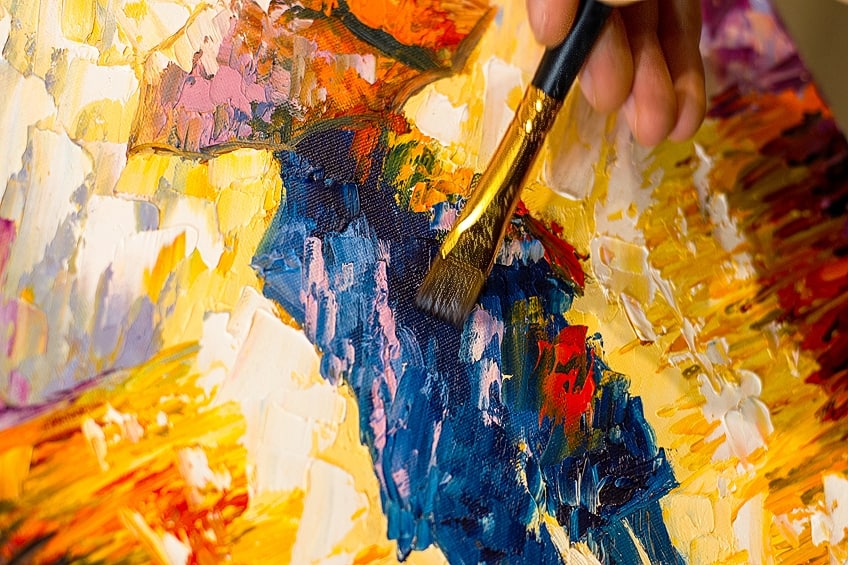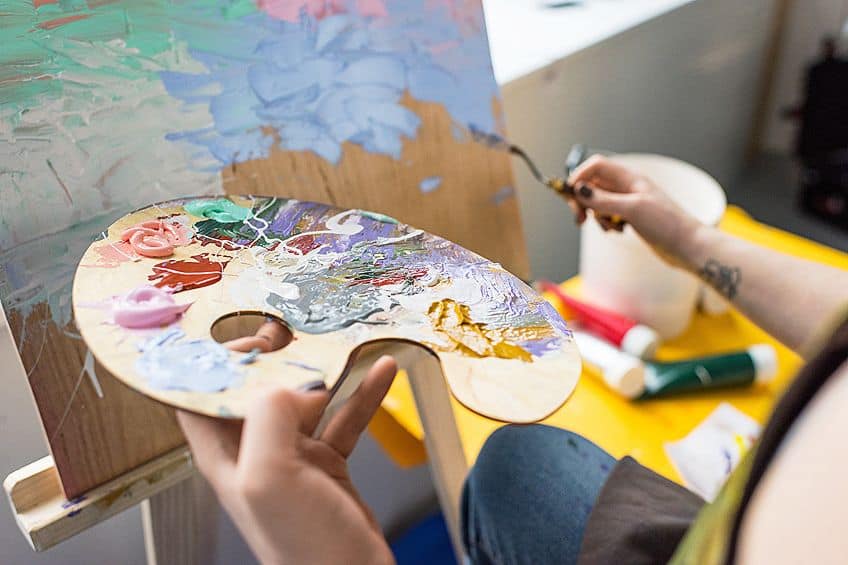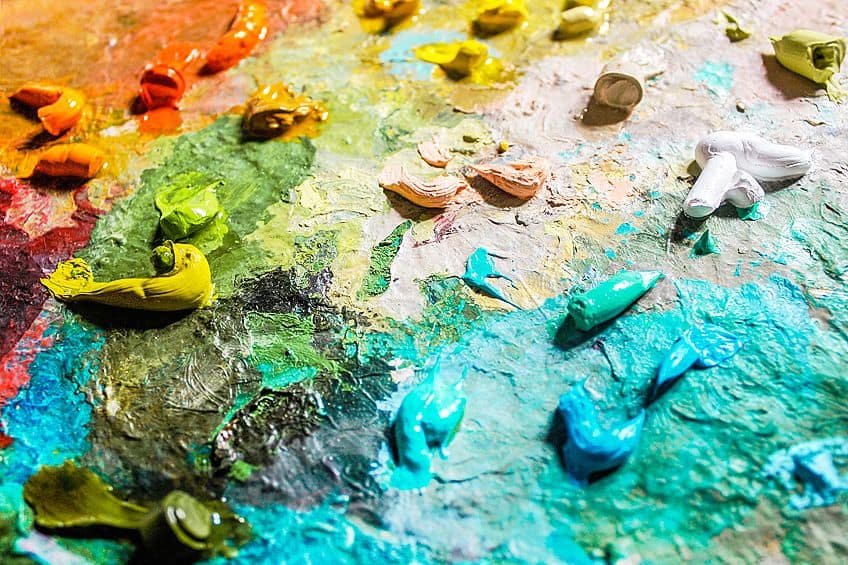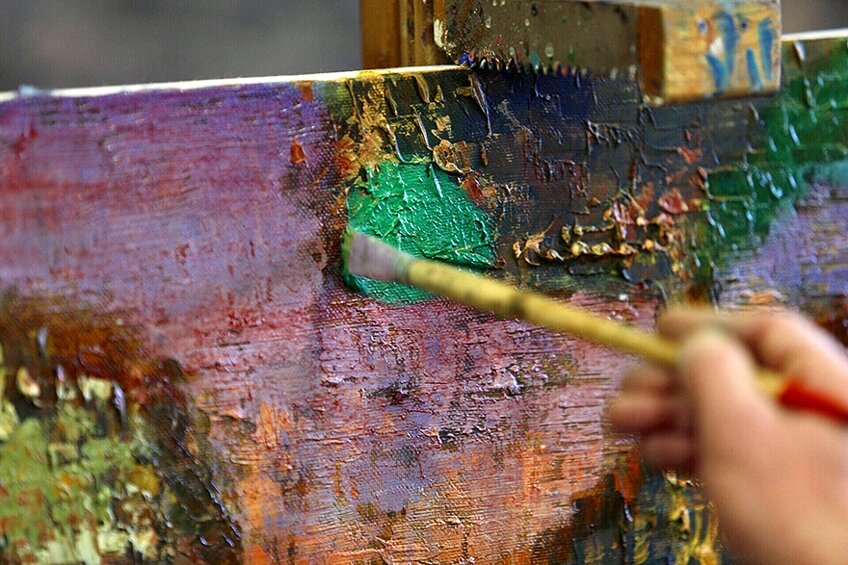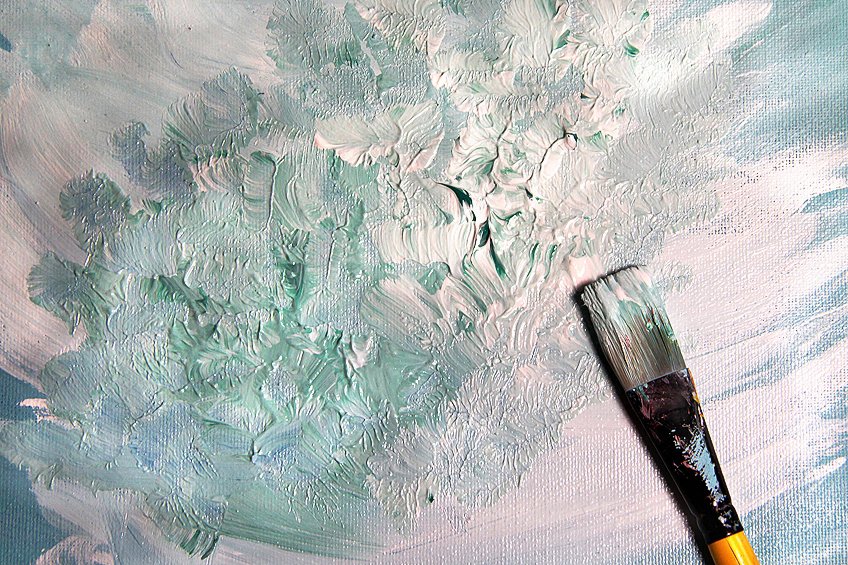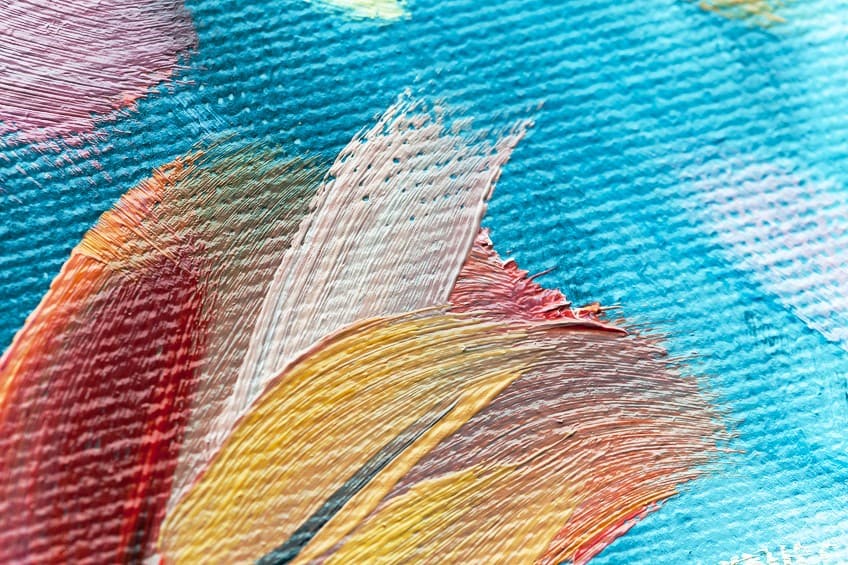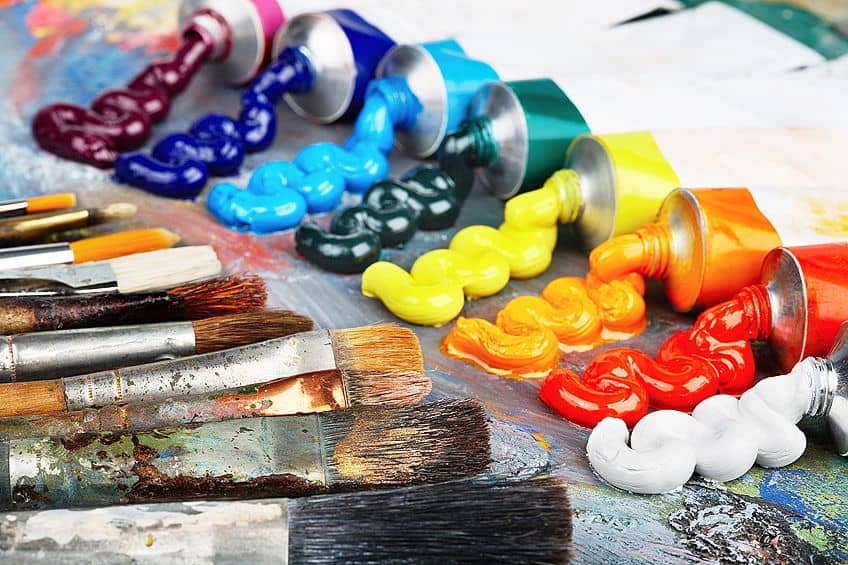How Long Does Oil Paint Take to Dry? – Oil Paint Drying Times
In the world of fine art, as far as painting is concerned specifically, you have several mediums from which to choose. Watercolors, for example, have been a popular paint medium for centuries now. More contemporary mediums, such as synthetic polymer-based paints like acrylics, are also on the cards for modern painters. However, there is no other painting medium that demands anywhere nearly as much prestige within the art world as in the case of oil paints. But while it is agreed upon that oil paints are indeed the best of any options available in terms of quality, they are burdened with one heavy caveat; oil paints take ages to dry! So, join us as we discuss exactly why this is as well as how to reduce these incredibly slow drying rates.
How Long Does Oil Paint Take to Dry?
Why does it take so long for oil paint to dry? Oil paints derive their namesake from the substances that, when mixed with pigments, are used as both the binding agent and vehicle in these paints, which is of course oil. The thing about oil is that, unlike the water or alcohol-based vehicles present in other paints, it takes a very long time to dry by itself. But before we get into why this is, let us begin first with establishing definitions for the aforementioned ingredients.
Pigments
The mass of tiny powdered grains of particles that, when mixed into a paint’s binder, provides it with color is called the pigment. Although pigment comes in a powdered form, its granular particles do not dissolve in liquid. When painted into a surface, the pigment is meant to adhere to the surface by the binder which should then dry above the pigment layer, protecting it from loosening off the surface and from environmental damage.
Pigments are also known to bear very little to no affinity with surfaces.
Since affinity in this context refers to the effectiveness with which two particles can combine, what this means for pigments is that they are unlikely to dissolve and seep into the surface you are working on. This ensures the production of better colors.
Adding a pigment is by and large the easiest means through which to produce color in paints.
During the period of early man and for most of human history, pigments were produced using raw materials retrieved from nature. This would include clay, rocks, and other resources that could be dried and broken down into granular minerals. In the modern era, we are now able to synthesize our man-made pigments. Oil paints will, for the most part, however, contain natural pigments.
Binders
The binder, or binding agent, is the material in the paint responsible for carrying the pigment, which stays suspended in the binders before and after painting. When paint is applied to a surface, the binder will dry above the layer of pigment to keep the color adhered to said surface.
As the vehicle evaporates (more on this in a second), the binder will dry out and solidify in a strong protective layer above the pigment, holding it in place against the surface while also offering some defensive properties against certain environmental factors.
Vehicles
When we talk about the meaning of a vehicle in terms of paint mixtures, we are referring to the liquid part of the paint that acts as a means to liquefy the solution so that it may be transferred to and spread across a surface.
The whole purpose of the vehicle is to assist in delivering the binder and pigment to the surface where it will then evaporate off of, with the binder locking the pigment in place as it dries in tandem.
According to modern painting conventions, water is now the most common vehicle used for painting given how fast it can evaporate. Alcohols are another popular example of vehicles found in painting, also known for their quick drying times. Acrylic and watercolor paints are particularly popular among art and crafters because their water-based vehicles account for some of the fastest drying times in painting.
Water has also replaced alcohol as the vehicle for a number of paints given that it affords more utility when working with surfaces that would otherwise be damaged by alcohol.
So, Why Is Drying Oil Paint So Time-Consuming?
Well, oil paints use oil as both the binder and the vehicle for the pigment. Most typically, you will find oil paints having been produced using linseed oil or other similar natural oils. Otherwise, you may find synthetic oils such as alkyl being used to create oil paints. Instead of evaporating off the painted surface as with the vehicles of most other paints, the oil will set directly onto the painted surface. Unlike water or alcohol, oil does not evaporate.
Instead, it will harden in a similar fashion to an acrylic binder, doing so through a process called oxidation, which occurs when the oil makes contact with air.
While this does lead to the development of strong, thick coats that will end up being far more durable than water-based paints; this process of oxidation through which the oil hardens and locks the pigments against the surface can take significantly longer. The amount of time it takes for a single layer of oil paint to dry can be considered merely one of the many presentable challenges that make the mastery of this medium such a laudable achievement. However, there is a dispute that these slow drying times can be incredibly inhibitive to one’s workflow.
Consider this along with the fact that oil paints are typically on the pricier side of things as far as paint materials are concerned and you have got yourself a compelling argument against the utility of oil paints. And this is not even to bring into account the myriad of paint utensils you will have to acquire as well.
So, what? Do we simply avoid using oil paints? Absolutely not! If there is one thing that we as humans, and artists by extension, it is adaptation.
For the rest of this article, we are going to break down for you exactly how you can go about cheating the system to score hours off the clock when working with oil paints. If you want to learn how to make oil paint dry faster, you have found yourself in the right place. Stick around to learn more about oil paint drying times and how to speed up this process.
How Long Does Oil Paint Take to Dry Normally?
The first thing to understand is that the time it will take for oil paints to dry will tend to vary depending on the brand of paint you use. Even then, there are different mixtures and consistencies produced by individual companies, lending to even more variation. Whether it sits on either your palette or your canvas, oil paint is only going to begin its slow process of setting as much as eight hours after leaving the container.
It most typically takes up to 24 hours for a standard layer of oil paint to completely dry and this will apply to every subsequent layer.
With thicker layers, this time frame may extend even further. While this may sound painstaking to a fast painter, artists who wish to take their time and not be rushed by the faster drying times of paints such as acrylics; oil paints do not sound half that bad. Regardless, this argument cannot be of interest to you. Otherwise, why would you be here?
We are here to figure out how to reduce this issue when working with oil paints.
Different Types of Oil Have Different Drying Times
How long does oil paint take to dry? For starters, the type of oil determines a lot. It is important to understand the types of oil used in your paint as this will have an effect on the drying times you can expect. The following is a break-down of how certain oils and additives can affect and alter how oil paint dries:
- Safflower oil and walnut oil dry at a slow rate on account of how heavy they are.
- Poppyseed oil is one of the heaviest oils found in painting and thus has the longest drying time.
- If you want to speed up the drying times of your oil paints, look towards chemical solvents, thinners, linseed oil, and alkyl mediums.
Factors That Affect the Drying Time of Oil Paint
Let us then discuss the several most important factors that will directly influence the rate at which your oil paintings dry and how one might make this work to their advantage. Read on below to understand these factors a bit better!
Color Control
Did you know that the pigments and colors of oil paints can lead to differences in drying times? Drying times do differ across the color spectrum given that some pigments may carry more weight than others. A heavier pigment will inevitably lead to quicker drying times. A great way to prevent this from causing issues with the standard drying time of 24 hours, you should make sure to paint the surface with a fair amount of consistency to avoid the oversaturation of said surface.
This way, it should not take longer than a day for your paint to dry irrespective of the pigments used.
Color shades such as reds, browns, oranges, and most other earth tones, in general, will typically lead to faster drying times. This is because they contain iron oxide, which is incredibly lightweight. You can also opt for paints produced by companies that use cobalt or lead as core ingredients as this also leads to faster drying times.
On the other hand, you will find that yellows, whites, and blacks are much heavier paints that may lead to extended drying times.
Picking Your Brand
If you have fairly extensive experience in working with paint, you should know that you most often get what you pay for when it comes to buying paint. Your choice of brand to buy paint from will indeed influence its overall quality. If you are a beginner in the art of oil painting, there is no shame in deciding on a cheaper brand to cut the costs necessary to get started.
The experts and professionals, however, there is ample merit in buying pricier paints that give off better color and, of course, dry faster.
Before settling on a type of oil paint to purchase, you should first do yourself a huge favor by trying to find and read as many product reviews and ratings as possible to better inform your decision. Who better to seek informative advice from than the customers who have come before you? The one thing we can say for certain that all these paints have in common is the fact that they are made using oils. However, there can be massive differences between the formulas of different products produced by different companies.
If you want an oil paint that dries fast, do your research on which companies produce oil paints with quicker drying times.
Painting Methods
Other things that contribute greatly to the rate at which your oil paint dries are the styles and techniques apparent in your brush strokes during the painting process. When trying to achieve powerful contrasts, deeper textures, and impressive gradients, we sometimes need to go with the approach of using heavier brush strokes. This would mean that paintings made using styles such as impasto and fresco can even take upwards of an entire week to completely dry.
This is because you can only add a new layer of oil paint once the previous one has completely dried.
If you want to avoid the worst of the slow drying times, try different techniques that demand thinner strokes of the brush. Alla prima and other such techniques can be applied where brisk strokes are used to produce paintings on which several layers can be added within a single day. This is because these styles of painting require you to apply additional layers atop prior ones before the first layers dry.
This is why these methods of painting are also often described as belonging to the “wet-on-wet” style.
Environmental Influences
Oil-based paints are incredibly susceptible to being influenced by the climatic conditions of the environment that surrounds the workspace. It is deemed essential that you take into consideration the humidity, sunlight, and moisture your oil paint is exposed to as this may greatly affect not only the drying time of your oil paintings but also the result.
You should pay close attention to the surrounding temperature of your workspace as this will have a great impact on the efficacy of your painting’s ability to dry.
In colder conditions, oil paint will oxidize at a slower rate, which should lead to longer drying times. This is not necessarily a bad thing, however, because, at temperatures below 20 degrees Fahrenheit (-6.7 degrees Celsius), your oil paint can be stored overnight for use the next morning if necessary. On the other hand, warmer weather tends to improve drying times.
A temperature of 70 degrees Fahrenheit (21 degrees Celsius) is considered by most experts to be perfect for optimal drying speeds.
How to Make Oil Paint Dry Faster
There are several oil-based products that, when mixed with your oil paints, can help you moderate the rate at which they dry. You can play around with these additives to tailor the drying times of your oil paint more to your liking, which in this case would be to speed this drying process up as much as possible.
But, beyond this, adding these extra mediums to your oil paint can also improve the color, viscosity, and consistency of your paint.
Most typically, an artist would want to pair the additive mediums with a solvent to make them function better when mixed into your paint. Now, allow us to discuss some of the very many oil-based mediums that you could add to your oil paints.
Oil-Based Mediums
Most of the oil paints you will find on the shelves of your local art store will contain some of the same oils we will find in additive oil-based mediums. These include, but are not limited to; walnut, safflower, linseed, and poppyseed. Not only are their odors non-toxic but they also present very little risk to health in general. If you are working on a painting with extensive use of heavy textures and strokes, as well as a lot of gloss, oil-based mediums are a reliable choice.
However, whether or not this expedites the rate at which your painting dries will be dependent on the certain kinds of oil you choose to use.
Another terrific benefit afforded to artists through the use of oil-based mediums is that they are excellent for the cleaning and maintaining of brushes in between painting sessions. The penetrative properties of these oils do wonders when it comes to completely removing excess paint and pigmentation from the surfaces of your brush’s bristles.
Besides removing paint, these oil-based mediums will also condition the bristle fibers, which helps keep them flexible and prevents them from becoming brittle.
Thinners and Solvents
Thinners as well as some solvents can help make your oil paints thinner in their consistency, which can assist greatly in shortening the drying times you have to deal with. Producing washes and achieving otherwise complicated techniques such as underpainting can also become much simpler when using thinners and solvents to dilute your oil paints.
Just as with oils, solvents and thinners also have the additional function of being useful for cleaning up your brushes after use.
Just be sure to avoid leaving your brushes to soak in thinners or solvents too long as this could lead to damaging your bristle fibers and making them more brittle. You are advised to rinse your brushes under water to remove any excess chemicals from the bristles before letting them dry out.
The paint-stripping capabilities of these liquid chemicals come in handy not only for the cleaning of your brushes but for the cleaning of your workspace as well.
If you have any spills of oil paint that have managed to dry on any surfaces beside your canvas, you can use a bit of this chemical to break down the particles holding them to the surfaces without having to apply so much elbow grease. Odorless solvents exist for those of you who prefer to avoid working with harsh-smelling chemicals.
Non-Toxic Solvents
These liquids contain naturally sourced chemicals and ingredients that pose no serious physiological risk to the user. For example, there are citrus-based mediums available out there that are composed entirely of citrus oils and water. The natural acidity of the citrus fruit makes it effective for scrubbing away spills of oil paint as well. You could also use spike lavender oil, which is renowned among artists for its pleasant and relaxing aroma.
From experience, we can tell you this makes the painting process just a tad more enjoyable than it already is.
Alkyd Mediums
Artists who know a thing or two about drying oil paint faster should be alive to the benefits of adding alkyd mediums to your paint mixtures. They contain a resin that sets incredibly fast, hardening in only a handful of hours and greatly decreasing the drying times of oil paints.
Better yet, alkyd mediums provide a glossy sheen to the finish of your paint layers. You can also add these mediums to your paint without the need for additional oils and solvents.
You have two primary options to choose from when looking for an alkyd medium. Firstly, we have Liquin; a thick substance that you will not find much difficulty in working with. Secondly, you have the gel version of the product, which improves the liquidity and greatens the transparency of your oil paint.
Irrespective of which one you choose; you will still garner the benefit of dealing with faster drying times.
Adding Gesso and Primer Layers
You can add a layer of gesso or primer to your painting surface before you begin painting to improve not only the longevity, adhesiveness, and overall quality of your painting but also to decrease the time it takes for your oil paints to dry.
Congratulations on making it this far. By now, you should know how long it takes for oil paint to dry as well as how to expedite the process using certain techniques and additive materials. We hope that this information proves useful. Happy painting!
Frequently Asked Questions
How Do I Decrease Oil Paint Drying Times?
You can add things like alkyd mediums, solvents, or certain oils to your oil paint in order to decrease the amount of time it takes for layers to dry.
How Long Does Oil Paint Take to Dry?
Unlike acrylics and other water-based paints, oil paints use oil as both the vehicle and binder. This means that the oil does not evaporate and needs to undergo the slow process of oxidation in order to set properly. Thus, it can take as long as 24 hours for a layer of oil paint to dry.
When Can I Frame My Oil Painting?
Oil paintings are weird in that they dry unlike any other kind of paint drying from the outermost layer and working inwards. Therefore, oil paintings might take several months before they can be framed. To prevent condensation within the frame, you need to wait anywhere between six to twelve months for an oil painting to be ready for either framing or varnishing.
Megan is a writer and researcher who holds a degree in Social Sciences, with a specialization in Psychology and Environmental Science, from the University of Cape Town. Her dedication to acquiring knowledge and making a positive impact has driven her current work in promoting conscious and sustainable growth in Southern Africa. Megan’s interests encompass exploring the physical and psychological impacts of color in our environment on our mood and well-being. She is also passionate about the role of art and creativity, which has been an integral part of society since the beginning of human history. Since 2022, Megan has been contributing blog posts on painting and color theory at artfilemagazine.
Learn more about Megan van Schoor and about us.
Cite this Article
Megan, van Schoor, “How Long Does Oil Paint Take to Dry? – Oil Paint Drying Times.” artfilemagazine – Your Online Art Source. December 7, 2022. URL: https://artfilemagazine.com/how-long-does-oil-paint-take-to-dry/
van Schoor, M. (2022, 7 December). How Long Does Oil Paint Take to Dry? – Oil Paint Drying Times. artfilemagazine – Your Online Art Source. https://artfilemagazine.com/how-long-does-oil-paint-take-to-dry/
van Schoor, Megan. “How Long Does Oil Paint Take to Dry? – Oil Paint Drying Times.” artfilemagazine – Your Online Art Source, December 7, 2022. https://artfilemagazine.com/how-long-does-oil-paint-take-to-dry/.


